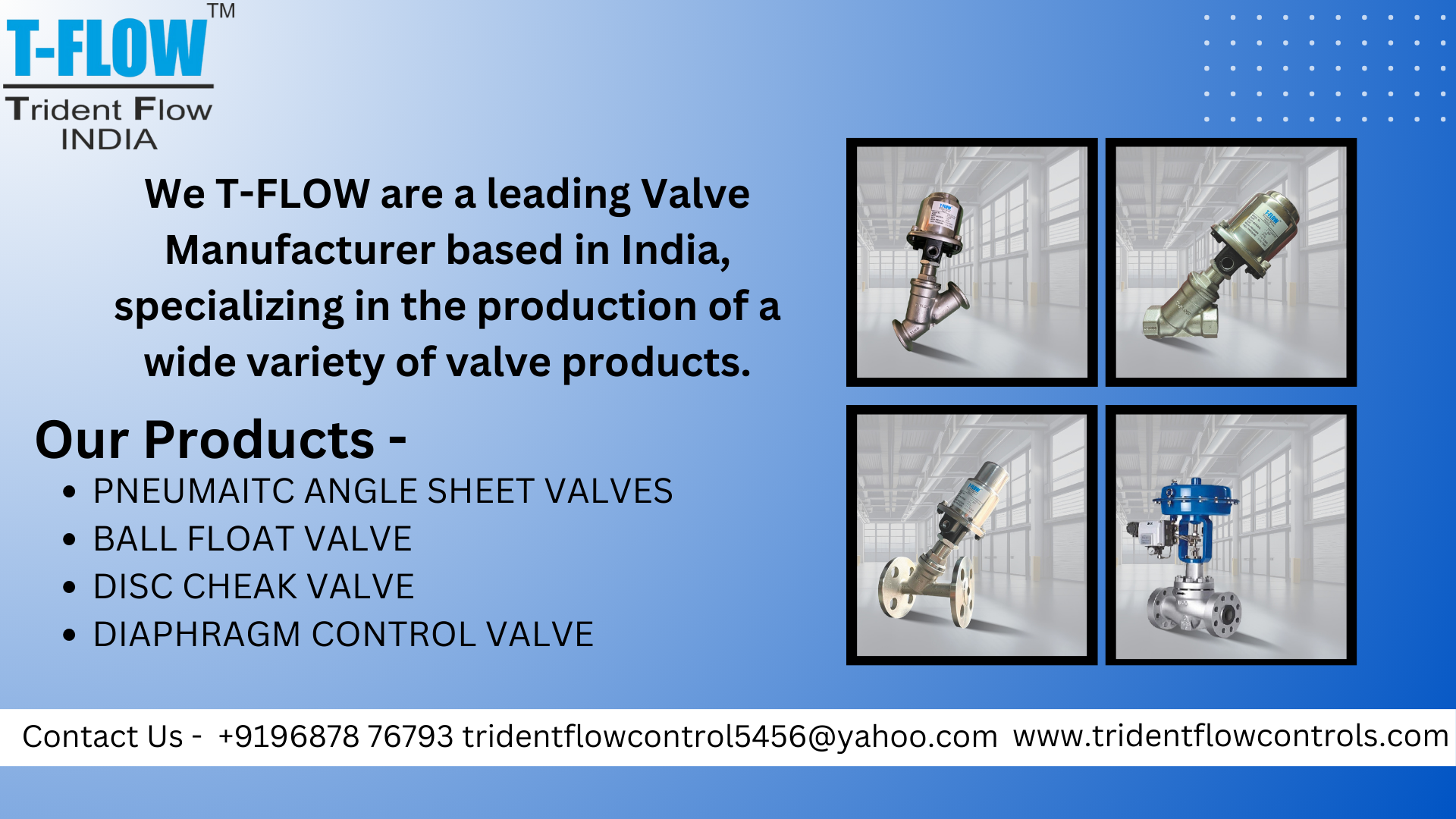Types, Materials and Considerations of Diaphragm Valves
Home Types, Materials and Considerations of Diaphragm Valves
Types, Materials and Considerations of Diaphragm Valves
Types,
Materials and Considerations of Diaphragm Valves
Diaphragm valves are linear motion valves used to
start, regulate, and stop fluid flow. Their unique construction includes a flexible
diaphragm that presses against a weir or seat to create a seal, effectively
isolating the flow medium. These valves are known for their leak-tight
sealing, corrosion resistance, and clean-in-place (CIP)
capability, making them ideal for hygienic and aggressive applications.
Widely used in industries like pharmaceuticals, food andbeverage, chemical processing, water treatment, and mining, diaphragm
valves are especially valuable where purity, chemical resistance, and zero
contamination are critical.
Applications
of Diaphragm Valves
- Pharmaceutical
Manufacturing – Sterile liquid control, CIP/SIP systems.
- Food
& Beverage Processing – Hygienic fluid handling and flavor dosing.
- Chemical
Industry – Acid and alkali flow control.
- Water
& Wastewater Treatment – Slurry, sludge, and chemical feed
handling.
- Mining
& Mineral Processing – Abrasive slurry transport.
- Biotechnology
– Sensitive media isolation in bioreactors.
- Power
Plants – Deionized water flow and condensate drainage.
- Pulp
& Paper Industry – Bleach and chemical dosing lines.
- Semiconductor
Industry – Ultra-pure fluid systems.
- Breweries
& Distilleries – Clean beverage flow with no contamination.
Features
and Their Uses
|
Feature |
Use / Benefit |
|
Flexible Elastomer Diaphragm |
Provides tight shutoff, even with particulates in the fluid. |
Non-Sticking, Leak-Free Design |
Ideal for sterile or aggressive environments. |
|
Weir or Straight-Through Body |
Allows for throttling (weir) or full flow
(straight-through) depending on need. |
|
Top Entry Maintenance |
Quick access to replace diaphragm without removing valve
from pipeline. |
|
Rugged Construction |
Withstands corrosive and abrasive fluids. |
|
Minimal Dead Space |
Prevents bacterial growth—critical for hygienic
applications. |
|
Manual, Pneumatic, or Electric Actuation |
Suitable for a variety of process automation setups. |
|
Bubble-Tight Shutoff |
Essential in chemical feed or toxic fluid handling. |
|
Self-Draining Design (optional) |
Ensures complete drainage in hygienic applications. |
|
No Packing Gland |
Eliminates leakage issues seen in globe or gate valves. |
Key
Points to Consider
- ✅ Ideal for hygienic, corrosive, and slurry-based flows
- ✅
Wide material compatibility with PTFE, EPDM, PVDF, etc.
- ✅
Simple maintenance and fewer moving parts
- ✅
Great for throttling and on/off control
- ✅
Works in low pressure and vacuum lines
- ✅
Can be operated manually or via automation
- ✅
Excellent resistance to chemical attack and contamination
- ✅
Easy to clean, inspect, and service
- ✅
Available in both metal and plastic bodies
- ✅
SIP/CIP compatibility for pharmaceutical-grade valves
Top 10
FAQs – Diaphragm Valves
- Q:
What is the primary advantage of a diaphragm valve?
A: Leak-tight performance and resistance to contamination. - Q:
Where should diaphragm valves not be used?
A: In very high-pressure or high-temperature systems beyond rated specs. - Q:
What’s the difference between weir and straight-through diaphragm valves?
A: Weir valves offer better control and shutoff; straight-through valves allow unrestricted flow. - Q:
What are common diaphragm materials?
A: EPDM, PTFE, Viton, and Butyl, selected based on media compatibility. - Q:
Can diaphragm valves handle abrasive fluids?
A: Yes, especially those with reinforced diaphragms and plastic or alloy bodies. - Q:
Are diaphragm valves suitable for slurries?
A: Absolutely—they prevent clogging and leakage. - Q:
How often do diaphragms need to be replaced?
A: Depending on usage—every 1 to 3 years is typical under normal conditions. - Q:
Can diaphragm valves be automated?
A: Yes, with pneumatic, electric, or hydraulic actuators. - Q:
Are diaphragm valves sanitary/hygienic?
A: Yes, especially those made to ASME BPE standards for biopharma and food. - Q:
Are they suitable for vacuum applications?
A: Yes, as they offer bubble-tight shutoff and minimal leakage.
Types of
Diaphragm Valves
|
Type |
Description |
|
Weir-Type Diaphragm Valve |
Has a raised lip/weir; suitable for most applications with good shutoff control. |
Straight-Through Diaphragm Valve |
Unrestricted flow path; best for slurries, viscous fluids,
or solids-laden media. |
|
Manual Diaphragm Valve |
Operated by handwheel; used for simple on/off or
throttling tasks. |
|
Pneumatic Diaphragm Valve |
Automated via air actuator for frequent cycling and remote
operation. |
|
Sanitary Diaphragm Valve |
Cleanroom-ready with CIP/SIP support; meets FDA and ASME
BPE standards. |
|
Plastic Body Diaphragm Valve |
Lightweight, corrosion-resistant; ideal for chemical
processing and water lines. |
|
Metal Body Diaphragm Valve |
Durable and pressure-resistant; made from cast iron,
stainless steel, or alloy. |
Contact
Us For More Details On :
Call –
9687876793
Email -
tridentflowcontrol5456@yahoo.com
Website –
www. tridentflowcontrols.com
Address -
90, Vrundavan Estate, Opp. Vijay Estate, Bhikshuk Gruh, Odhav, Ahmedabad-382
415.
YouTube -
www.youtube.com/@tridentflowcontrols
Instagram
- www.instagram.com/trident_flow
Quick Links
Our Products
Get In Touch
90, Vrundavan Estate, Opp. Vijay Estate, Bhikshuk Gruh, Odhav, Ahmedabad-382 415.
tridentflowcontrol5456@yahoo.com
tridentflowcontrol5456@yahoo.com
9687876793
T-FLOW 2023-2024 | All Rights Reserved. Design and Developed by Industry Lead -8000121171
